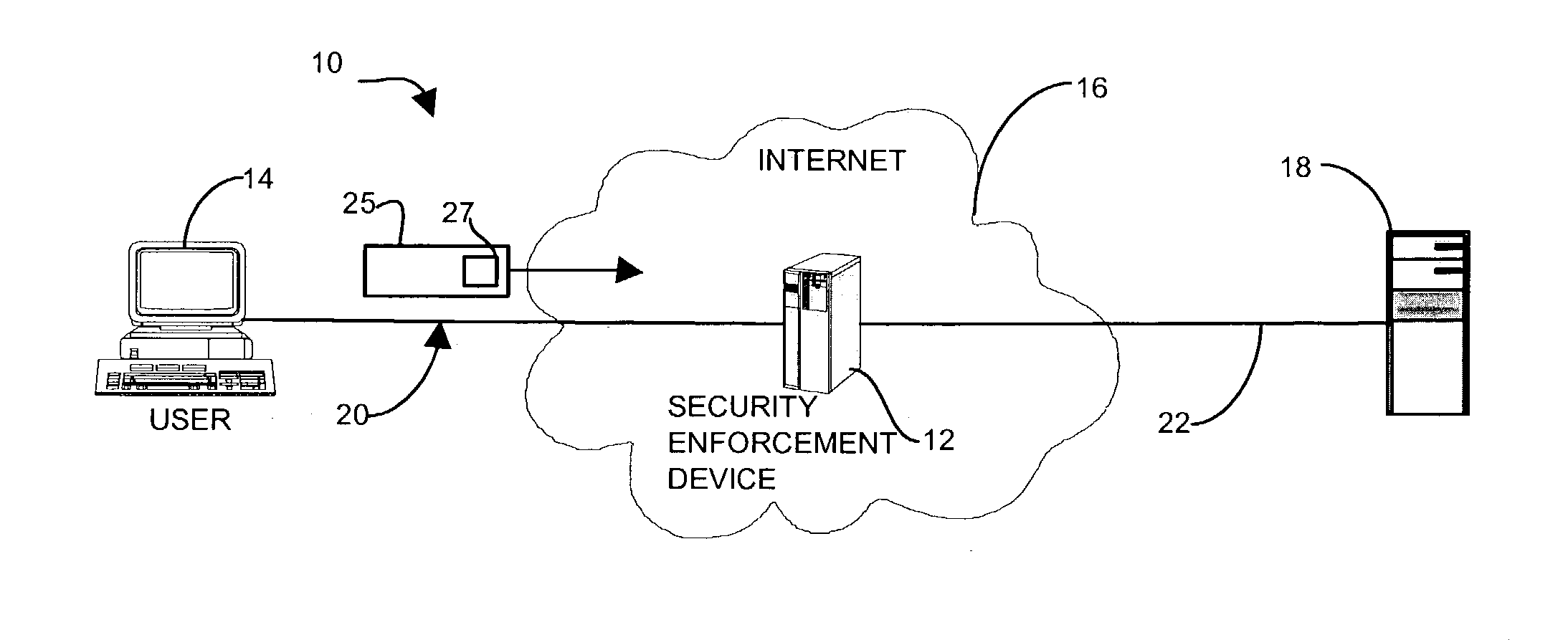Such security threats include loss of privacy, loss of
data integrity (tampering), identity spoofing, and denial of service, to name several.
Encryption technology, however, hinders the ability of third parties to control and monitor such communications.
Attempts to regulate the use of encryption technology have met with limited success.
Difficulties with mandating the inclusion of such a
chip in widely distributed hardware baselines resulted in the failure of this approach.
Also, since computing hardware tends to be rapidly deployed, inability to retrofit widely disseminated hardware installations limits the effectiveness of incorporating such technology only in new devices.
Accordingly, CRLs impose substantial overhead and have not been widely employed for this reason.
Key Escrow attempts have also proven unwieldy due to implementing a mechanism to legislate and enforce such requirements.
Key escrow requirements exist in various situations involving governmental and / or corporate communication policies, however, the policy makers have difficulty enforcing compliance with such a
key escrow policy.
Such policy makers are usually able to enforce
key escrow most efficiently when they actually issue the keys to the individual end-users, but even in such cases they may not able to ensure that no unauthorized keys are also being used.
Also, storage and
cataloging of keys imposes substantial overhead and consumption of resources on the escrowing agent.
Further, forcing involuntary deposit also meets substantial political, legal, and implementation hurdles.
For the above reasons, efficient and practical
enforcement of generalized security technology registration and
enforcement has not been feasible.
Unfortunately, empowered authorities, such as corporate IT departments, managers, and overseers of sensitive information systems may desire to monitor or control the use of cryptographic technology by employees or other users of their communication networks.
Such end-users are often likely to have access to confidential information and / or to be operating desktop or
laptop computers which the corporation desires to protect from harm by computer viruses, for example.
However, efforts have shown that it is difficult to efficiently implement a mechanism for monitoring and controlling the use of cryptographic technology by a particular set of users.
The very nature of such cryptographic technology for encryption and
authentication tends to evade conventional enforcement techniques because encryption keys are fleeting entities which a user's computing device rapidly generates, uses, and obsoletes.
Nonetheless, entities such as corporate officers and law enforcement agencies seek control of encryption technology because traditional methods of corporate oversight, monitoring and
intelligence gathering tend to be thwarted by this modern technology.
The conventional methods described above do not offer an efficient and practical solution to effective detection and control of cryptographic technology.
Accordingly, the unlawful user of encryption technology is able to evade conventional enforcement techniques because empowered sovereigns such as corporate and government entities are unable to prevent the undesirable or illegal
dissemination and use of encryption keys for such communication.
In this situation as well, the enforcer is not be able to analyze the contents of the Quick-mode IKE messages unless it had obtained and retained the decryption keys negotiated for the other
IPSec association.
However, in this case the enforcer readily identifies that these are IKE QUICK-mode messages based on the message header, and if it did not have the keys for decrypting them, it is operable to block the messages, thereby disabling the use of QUICK mode.
One possible difficulty is that because Quick-mode has encrypted the SA-proposal and SA-choice fields, which contain the SPI values, the enforcer would not be able to rely on SPI values to make decisions about
IPSec traffic, and would have to make decisions sometimes based only on the IP addresses.
Obtaining the keys enables more functionality, but also compromises the security of I and R to a greater degree.
This second method, however, implies that all subsequent
IPSec traffic between I and R also have to be intercepted, decrypted, and then re-encrypting using other keys.
This re-encrypting may, in particular configurations, present issues concerning
scalability to large intercepted traffic volumes.
The device, therefore, attempts to detect known methods of establishing secure communications and to then block usage deemed unacceptable without interfering with performance or preventing legitimate communications.
The security enforcement device further applies the secure authorization logic in an unintrusive manner such that the communications endpoints are unaware of the secure authorization query.
Accordingly, the device may operate in an “observation” or
logging mode in which the device detects, but does not prevent, suspect key usage.
However, once the device computes a deterministic result to block communications, the result applies to subsequent secure communications attempts, or alternatively the device may break or sever the previously allowed secure session that is thereafter determined to be using an unauthorized key.
 Login to View More
Login to View More  Login to View More
Login to View More 


